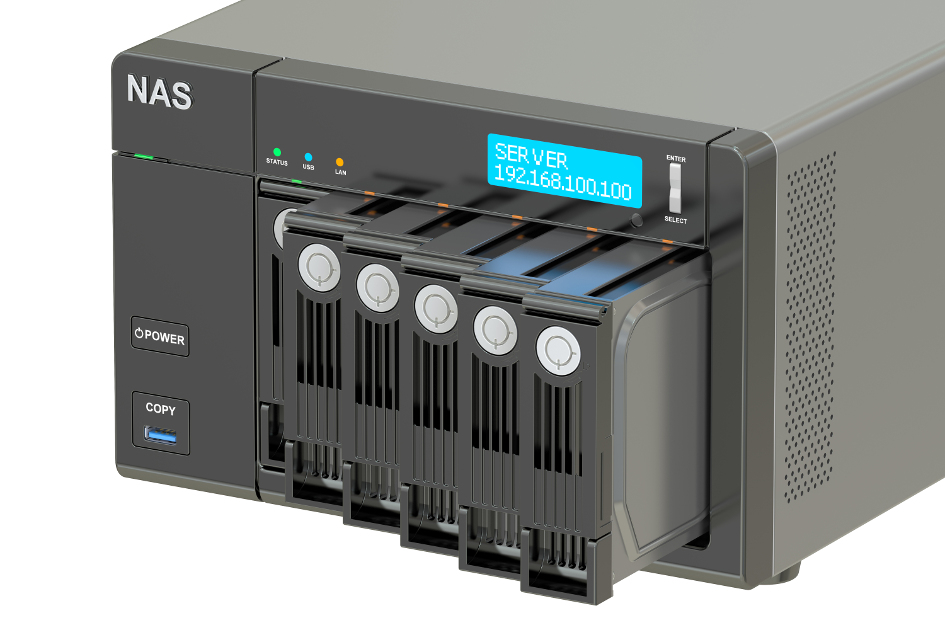RAID Data Recovery Services
No one can predict when data loss from a RAID will occur, but we know it can be catastrophic when it does. If you suspect a RAID array failure, contact the experts at LostData to get your data back as quickly as possible.
Emergency help for NAS devices
Call us now to find the fastest solution for your NAS recovery. We recover data for companies and individuals. No NAS recovery is too big or too small.
When you call we:
- Diagnose the cause of data loss and identify possible fault points
- Verify if Remote Data Recovery is possible
- Explain the data recovery process and the specifics for your individual case

Recover from RAID Systems
Our engineers, backed by over 5 years of data recovery research, experience and development, have the knowledge and tools to get your data back. We perform RAID data recoveries on:
- Any RAID level
- Any RAID controller, RAID architecture including software-defined storage(SDS)
- Any hard drive type, make or model
Don’t see your RAID type listed here? Get in touch with one of our experienced RAID data recovery specialists for a more defined list.
| RAID 0 | RAID 1 |
| RAID 3 | RAID 4 |
| RAID 5 | RAID 1E |
| RAID 6 | RAID 5E |
| RAID 5EE | RAID 0+1 |
| RAID 10 | RAID 50 |
| RAID 51 |

Flexible service options
A failed RAID array may not be able to be shipped to us for recovery. Whether it is due to corporate security protocols or the sheer size of the array, we offer our customers multiple service options to meet their needs. Ask your data recovery specialist which option would be best for you.
When the hardware is still functioning properly, data recovery can be performed through a secure internet connection. This is a fast and cost-effective method to recover data from a RAID which cannot be moved.
When you’re experiencing a complex data loss situation and the RAID array cannot be moved, an onsite recovery might be the best option for you. The data recovery is performed at your location, typically within 24 hours upon the arrival of our engineers.
Common causes of RAID data loss
Each RAID data recovery is unique, but there are a few common causes for data loss.
Human error
Whether on accident or completed with malicious intent, data loss from reformatting, reinstalling or volume overwrite can be conquered by expert data recovery engineers.
Power issues
RAID systems can be affected by loss of power, power cycling and power surges causing loss of data. RAIDs running in a degraded state are especially vulnerable, as power issues can cause out-of-sync drives to be reincorporated into the array. In these cases, our teams have the tools and expertise to map the data and logically rebuild the RAID in order to extract the required data.
Mechanical issues and failed rebuilds
RAID systems are built to withstand individual drive failure, but once a RAID is running in a degraded state, the workload of the remaining drives increases and so does the risk of additional drive failures. Additional drive failure can lead to failure of the RAID. We have the cleanroom environment and expertise required to recover data from failed drives, combined with the logical skills and tools to rebuild and repair file systems from failed or partially rebuilt RAID systems.
Natural Disasters
Fire, water, dirt and other contaminants from natural disasters can destroy a RAID floor in an instant. Rebuilding file systems from a RAID affected by a natural disaster takes specialized facilities, knowledge and tools to decontaminate the drives and logically rebuild the data. LostData has state-of-the-art tools and cleanroom environments to safely recover from physically damaged drives.
We have the knowledge and resources for successful RAID data recovery
Due to the highly technical nature of RAID recoveries, recovery providers not only need an inordinate amount of experience with RAID, they also need to have the storage capacity to handle a large amount of data. This is an area which sets LostData apart from the rest of the providers in the market. Our engineers combined have over 1,400 years of data recovery experience and our facilities are able to adapt easily to accommodate large amounts of data.
RAID Tips to Minimize Data Loss
If you have lost data from a RAID system, there are a few tips that can help to minimize the damage.
- Do not run CHKDSK. While CHKDSK can be useful on single drive systems with light corruption to force file systems into a constant state, in most cases, inconsistencies in a volume stored on RAID storage are a result of problems at the RAID level (i.e. out-of-sync drives, bad rebuilds etc.). Running CHKDSK in these scenarios can cause damaging irreversible changes to the file system structures.
- Never replace a failed drive with a drive that was part of a previous RAID system; always zero out the replacement drive before using.
- If a drive is making unusual mechanical noises, turn it off immediately. A mechanically failing drive that is still in use can increase the severity of the data loss and reduce the chances of a full recovery.
- Create and verify a backup of data on a RAID before making hardware or software changes.
- Label the drives with their position in a RAID array before removing them from your system.
- If a RAID system fails in the middle of a rebuild process, do not run further rebuild attempts.
- In a power loss situation with a RAID array, if the file system looks suspicious, is un-mountable, or the data is inaccessible after power is restored, do not run volume repair utilities.
Emergency Service Available!
Emergency
24-48 hours
Highest priority for time-critical data loss cases. Our experts work around the clock to restore your data.
Priority
2-5 business days
Fast service for business-critical data. The recovery will start immediately and our experts will work from 9am to 7pm, Sunday-Thursday until it is completed.
Standard
5-7 business days
Professional recovery of your NAS device at our normal business hours (9am to 7pm, Sunday-Thursday).
Time is an Important factor
When it comes to business-critical data, a NAS failure can cause huge financial damage. Our experts always check the possibility of a LostData Remote Data Recovery, our fastest method of recovery. With this proprietary technology, the data is restored directly onto your server via a secure internet connection. With RDR, there is no need to dismantle the NAS server and no shipping necessary. All you need is an internet connection.
Data Recovery from all NAS storage systems
Our experts have over 9 years of experience in the data recovery of NAS servers.
With specially developed data collection tools and techniques, our experts can quickly restore your lost data on any system. This applies to all types of NAS servers and RAID levels, all RAID controllers, all drives regardless of whether HDD or SSD and no matter what manufacturer. LostData works directly with most manufacturers to achieve the best recovery results possible. Some of these manufacturers include:
| ACER | Apple® | Buffalo™ | Cisco® | Dell™ |
| D-Link® | Drobo™ | EMC® | Cisco™ | Freecom |
| Fujitsu | Hewlett Packard | Hitachi | Iomega | Lite-On® |
| LevelOne® | LaCie® | LG | NetApp | Netgear® |
| Rackmount Storage Systems | Promise Technology | QNAP® | Seagate® | Synology® |
| Thecus® |
* If you do not see the manufacturer you are looking for listed here, please contact us for a complete list.
How does data loss on NAS systems / RAID arrays occur?
Each data loss has its own story, but there are common scenarios that require data recovery from network storage.
- Human errors: Unfortunately, human error is a common cause when data is lost from a NAS. Data loss often happens accidentally due to reformatting, reinstallation, deleting or overwriting a volume.
- Power failure: NAS systems can become corrupt due to power failure, voltage fluctuations or overvoltage. RAID arrays (the storage inside the NAS) that have been in use for some time are particularly vulnerable, as voltage fluctuations can cause individual disks to be out of sync resulting in a degraded or failed RAID array.
- Overheating: Faulty cooling in the server room or an improper location in an office or at home can result in overheating and drive failures.
- Defective NAS controllers: Defective controllers can cause errors during reformats or rebuilds. Errors in the firmware or operating system caused by reconfiguring the memory can cause data loss.
- Mechanical errors: RAID systems are designed to compensate for the failure of one or more drives. As soon as a drive fails in a NAS/RAID, the remaining hard drives must compensate for the failure. Multiple drive failures can handicap the NAS/RAID to the point of complete failure.
- Natural disasters: Fire damage, water damage, pollution and other contamination can destroy a NAS in seconds. Rebuilding a contaminated system requires special knowledge and the ability to thoroughly clean individual drives and other components of the NAS. Only then can the data be restored by a logical rebuild. LostData has the technical proficiency to thoroughly clean and successfully restore heavily soiled media.
Emergency Tips – What to do if you experience a NAS drive failure
- If you hear unusual noises, you should shut down the system immediately.
- Validate your backup before replacing or updating hardware or software.
- Do not use RAID recovery software if there is a possibility of a hardware failure.
- Do not defrag possibly damaged drives.
- Do not rebuild and/or reinstall the original system. Do not restore a backup to the same volume/drives.
Start recovering your data!
Contact our team of experts. LostData accommodates everyone – from the largest government or enterprise organization to an individual who may have lost their digital photos and everyone in between.
